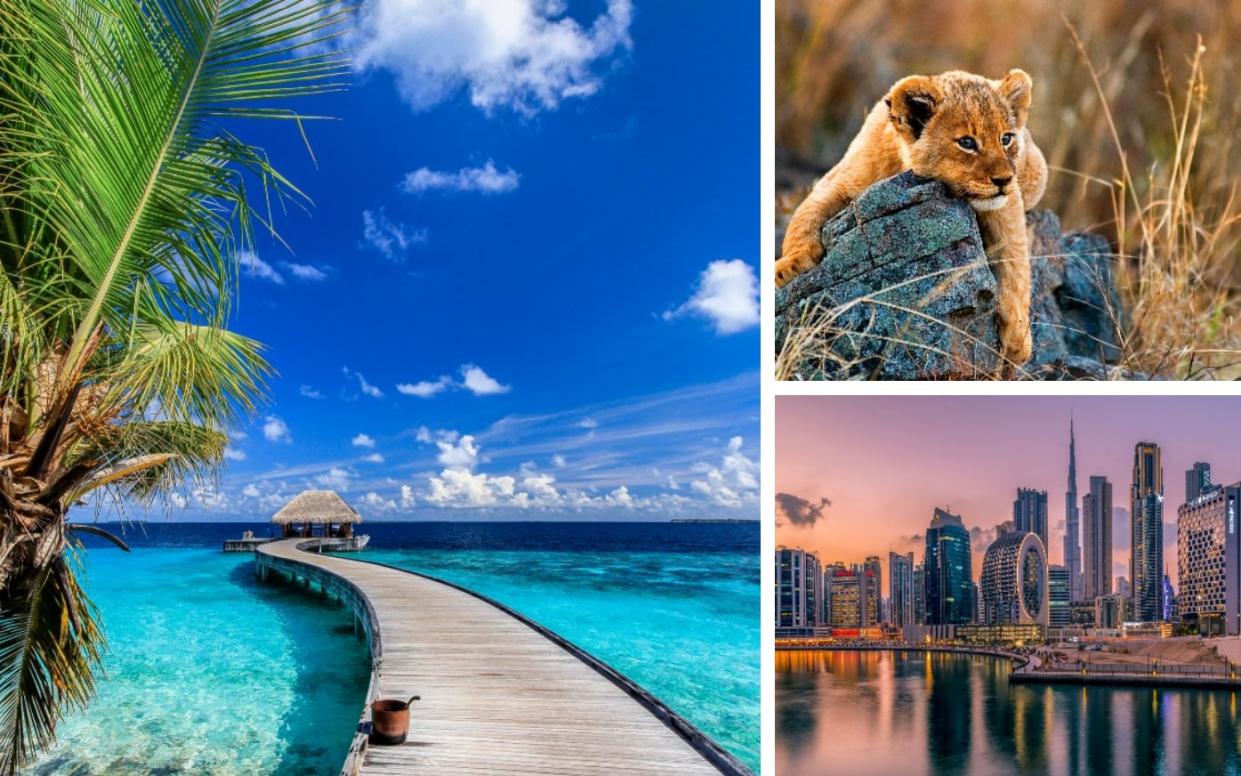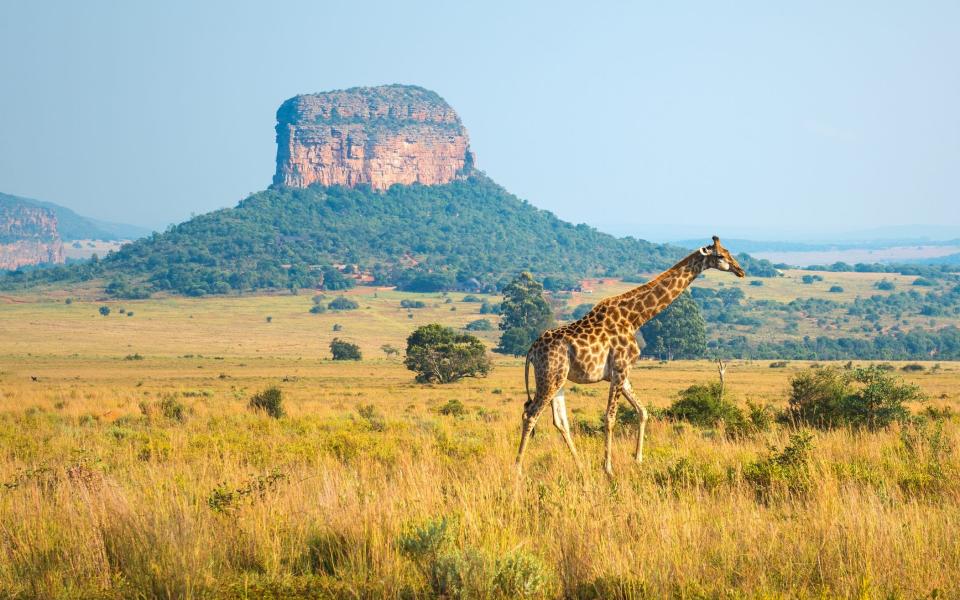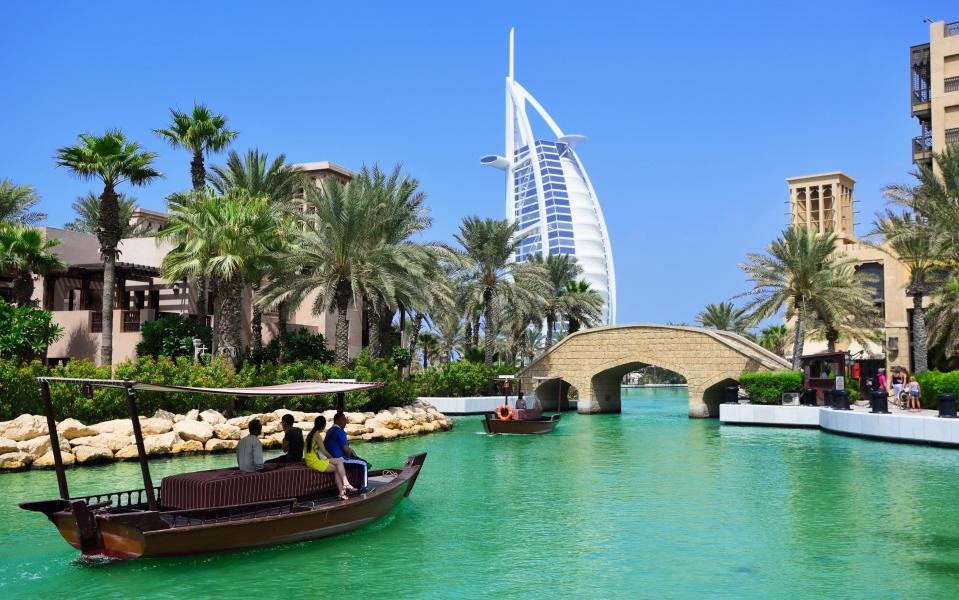The countries that might come off the 'red list'

There has been much talk of the green list, and the countries that could be promoted up from the contentious amber list. But what of the red list?
You’d have to be pretty desperate to seek a holiday in one of these 43 nations, with no direct flights from the UK and a £1,750, 10-day quarantine sentence waiting for you upon your return. Yet some of our favourite destinations sit in the category; South Africa, Chile and, more recently. Turkey and the Maldives among them.
So how long until we can visit? Here, we crunch the numbers and take a look at how these countries are getting on at the moment based on their recent case counts and vaccination rates – the two most important factors used by the Government to categorise them under its traffic light system. The next review is planned for June 7, and a lot can change between now and then.
By way of comparison, the UK’s seven-day case rate is low at 24 per 100,000 people. So far 68 per cent of the population has now been offered their first vaccination, and 39 per cent have had both doses. This puts us ahead of the rest of Europe but just behind the US. Interestingly, several countries on the UK’s red list have higher vaccination rates than we do (the Seychelles, United Arab Emirates and Chile among them) but continue to struggle with high case counts.
Now, let’s look a little closer...
Europe
Turkey is the only country in Europe that is currently red-listed, thanks to a significant surge in cases in December. When it was added, the news came as a particular disappointment following the Turkish government's decision to allow Britons to travel for summer holidays without a vaccination certificate or negative Covid test.
Turkey's current seven-day case rate sits at 88 per 100,000 people, significantly more than the UK's; but that has dropped by 23 per cent in the last week. The Turkish vaccination drive is progressing slowly but steadily, with 25 per cent of the population now double-jabbed, and 18 per cent having had their first dose.
If cases continue to drop quickly and the vaccination rates jump up, Turkey could be a contender for the amber list a month or so down the line; perhaps even sooner.
Africa
When the red list launched, just two of the then-33 countries had a higher Covid case rate than the UK, and several were seeing more than 10 times fewer infections than in Britain. That continues to be the case in Africa, but very sluggish vaccination drives in this part of the world is likely to keep it red for some time. Bad news for safari fans, but even worse for the industry on the ground, as funds dry up and push thousands into poverty.
South Africa’s current seven-day case rate is only a fraction higher than the UK’s at 33 per 100K, and has been this way since February. However, this has jumped by 26 per cent in the last week, and the country does look to be heading into third wave territory. Its vaccination drive has been off to a slow start, with only 1.5 per cent of the population having had their first jab. All this, plus the presence of the more transmissible South Africa variant, will probably keep it on our red list for many months to come.
Neighbouring Namibia, the second least-populated country on Earth, has delivered a first jab to 3 per cent of its citizens, and less than 1 per cent have had both. Distribution remains a problem, as does widespread vaccine hesitancy.
“We cannot reach a wider audience with information about the pandemic as well as the vaccination, especially in the remote inland areas where there are no newspapers, no internet as well as cell phones to keep them informed,” minister Penda Kashihakumwa told All Africa. Namibia’s seven-day case rate is 66 per 100K, up 43 per cent from last week.

Elsewhere in Southern Africa, Botswana sits at 83 cases per 100K, up 58 per cent from last week. At the end of last month, the country’s health authorities said they have arranged to receive nearly two million doses; enough to cover the entire adult population. Thus far, however, only 4.6 per cent of its population has had their first jab.
Rwanda is recording only 4 cases per 100K, Zambia is reporting less than 4, and Mozambique and Zimbabwe say case counts are less than 1 per 100K. All have administered jabs to less than 8 per cent of their populations, however.
The honeymoon islands
Both the Seychelles and the Maldives, world famous for their lavish island resorts, present something of a head-scratcher. Both rely heavily on tourism for GDP, and have invested in fast inoculation schemes, yet both have been reporting astronomical case rates of late.
The Seychelles is the second most-vaccinated nation in the world (after Gibraltar). More than 94 per cent of its population has had their first dose, and 83 per cent their second. Still, its current seven-day case rate is a whopping 591 per 100K. Importantly, though, the Seychelles has still recorded only 35 total Covid deaths.
The Maldives also has a high seven-day case rate of 1,780 per 100K; up 11 per cent on last week. Again, its vaccine drive has been impressive – 71 per cent of the population has been jabbed once, and 35 per cent twice. It is even planning to offer foreign visitors a vaccine under a scheme that has been dubbed “3V tourism: Visit, Vaccinate, Vacation”, later this year. In total, the Maldives has recorded 52,405 cases and 120 deaths.
Frustratingly for resorts and travel operators, many individual islands in the Seychelles and Maldives have worked hard to stay completely Covid-free. If Transport Secretary Grant Shapps does decide to judge islands separately from their mainland, as previously indicated, these would be in with a strong chance on merit alone. The fly in that ointment, however, is that flights from the UK almost all pass through South Africa or the Middle East, and then the mainland, before guests are ferried to their islands.
The Middle East
The United Arab Emirates, not only a luxury destination in itself, and a key business hub, is also the gateway to the Maldives, also on the red list. For all these reasons, the nation is extra keen to be promoted to the amber list.
Its vaccination rate is high; 60 per cent of the UAE’s population have had their first jabs, and 46 per cent have had both. However, its seven-day case rate is sizeable at 94 per 100K citizens, although that is down 14 per cent from the previous week. The Emirates’ National Emergency Crisis and Disasters Management Authority (NCEMA) eased travel restrictions two weeks ago, allowing easy passage for vaccinated travellers.
Dubai, a particular favourite among Britons, has kept its borders open since July 2020 and was late last year among the only places Britons could still travel to restriction-free. While some rules were put in place following a flare-up in January, Dubai eased them again on May 17, allowing hotels to operate at full occupancy again.

Oman’s case rate is 115 per 100K, up 74 per cent from the week prior. With only 6.5 per cent of its population jabbed once and 2 per cent twice, Oman too is nevertheless in the process of easing restrictions. However, there are cases of the India variant circulating. As a result, the Philippines has placed a ban on arrivals from the country until at least the end of May after its first cases were traced to Filipino workers returning from Oman.
Qatar’s figures are looking better, with a seven-day case rate of 75 per 100K, down 16 per cent from last week. Over half the population has had their first vaccine dose, and 38 per cent have had their second.
South America
Despite having some of the toughest restrictions in the world, South American nations including Brazil, Chile, Peru and Argentina have not got off lightly over the course of the pandemic. Cases are currently raging in these countries, despite moderate vaccination rates.
Argentina recorded its highest number of Covid infections (5,543) and deaths (745) on Tuesday and has begun a new nine-day lockdown amid a resurgence of coronavirus cases and a slow vaccine rollout. President Alberto Fernández said the country was experiencing its worst moment of the pandemic. Its seven-day case rate is hefty, at 471 per 100K, up 40 per cent from last week. Argentina has managed to jab 25 per cent of its population once and 6.5 per cent twice.
Brazil also has a high seven-day case count of 212 per 100K and a similar vaccination rate to Argentina’s; 23 per cent have had their first dose and 11 per cent their second.
Not far behind in terms of active cases is Chile, with 221 per 100K, but surprisingly its vaccination rate is very high compared; 62 per cent have been jabbed once and 50 per cent twice, comparable to the UK.
Peru’s seven-day case count is 94 per 100K, with 8 per cent of the population having had their first vaccine and 3 per cent their second.
Panama is the best of this bunch, with a case rate of 75 per 100K and a first dose percentage of 19 per cent. On May 17 restrictions were eased after celebrating the first day in 14 months with no Covid deaths.

